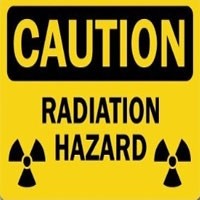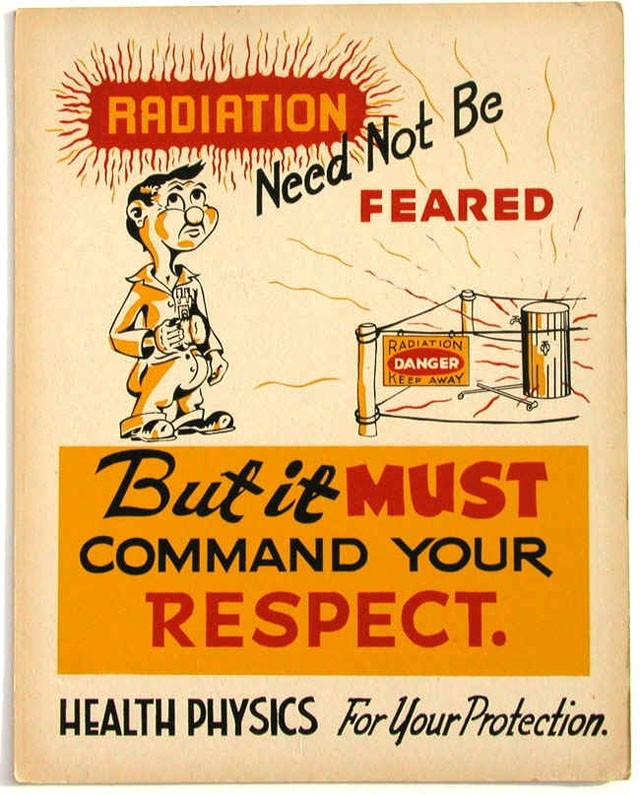Radiation Safety

Radiation is generally classed as either ‘ionising’ or ‘non-ionising’, with the former generally having more energy than the latter.
Ionising radiations
These include X-rays, gamma rays and particulate radiation (alpha, beta and neutron radiation) produced from X-ray sets or radioactive substances.
They are typically used in medical exposures, industrial radiography equipment and gauges used in industry for process control, but may also be produced from naturally occurring radioactive substances, including radon gas.
Non-ionising radiations
These include:
- radiofrequency and microwaves, eg from plastic welding and some communications transmitters
- infra-red, eg from very hot, glowing sources in glass and metal production
- ultraviolet (UV) rays, eg from welding or the sun
- visible radiation from high-intensity light sources, eg lasers
The hazards
Ionising radiations can cause dermatitis, burns, cell damage, cataracts and changes to blood. Microwaves and radio frequencies can cause heating of any exposed part of the body, infra-red rays can cause skin burns and cataracts and UV light can cause skin burns, skin cancer, conjunctivitis and arc eye. Lasers can cause permanent, severe damage to the eye and skin.
Exposure to ionising and UV radiation can damage DNA and can cause health effects, such as cancer, later in life. The risks are small for low levels of exposure but exposure to high levels of ionising and non-ionising radiations can cause acute effects such as burns, tissue and organ damage.
What do I have to do?
Identify all sources of ionising and non-ionising radiation in your workplace and the risks they pose. Once you have identified the significant risks, you must control them.
Try and reduce any exposure to ionising and UV radiation as far as possible. For example, you may be able to use safer alternative processes or equipment, eg ultrasonic, non-destructive testing instead of X-rays. Dos and don’ts of radiation safety
Do...
- make sure you are aware of the different potential sources of radiation in your workplace, particularly all sources of ionising radiations, UV light and high-power lasers
- consider getting competent advice from a radiation protection adviser (RPA); this is a legal requirement when working with ionising radiations. Names and contact details of RPAs can be found on our radiation site
- consider whether staff should be subject to medical surveillance – an RPA will help with this
- consider radon gas exposure as part of your risk assessment. This is naturally occurring and may be present in your workplace even if you don’t do any other work with radiation
- ensure appropriate shielding and personal protective equipment is used to reduce exposure when working with ionising radiation and to protect the skin and eyes when working with hazardous sources of infra-red (eg molten metal) and UV (eg welding)
- seek expert advice where lasers are used for displays (eg bars, nightclubs and stage shows) and there could be a risk to the public
- Don’t...
- override any interlocks preventing access to high-voltage electrical equipment, X-ray cabinets, laser enclosures or machinery containing lasers
- use potentially harmful germicidal UV lamps as replacements in otherwise safe insect-killing devices or other fluorescent light fittings. Make sure you replace these with the correct type specified by the manufacturer
Remember…
If your work with ionising radiations could produce a radiation emergency (ie an event that could lead to a member of the public receiving a dose of ionising radiation above certain levels) the Radiation (Emergency Preparedness and Public Information) Regulations 2001 may apply. For more information, see our radiation site.
Businesses are required to manage general risks in the workplace – this includes sources of non-ionising radiation, such as electromagnetic fields (EMFs). HSE currently advises employers to use the recommendations of the International Commission on Non-Ionising Radiation Protection link to external website as the basis for assessing the risks arising from exposures to EMFs.
- r98465ba88359059bd50c33fe3f570a9b1.jpg
- p958eb763e21347191c2a44754a0ad478e.jpg
What are the main types of radiation?
Radiation is generally classed as either ‘ionising’ or ‘non-ionising’, with the former generally having more energy than the latter.
Ionising radiations
These include X-rays, gamma rays and particulate radiation (alpha, beta and neutron radiation) produced from X-ray sets or radioactive substances.
They are typically used in medical exposures, industrial radiography equipment and gauges used in industry for process control, but may also be produced from naturally occurring radioactive substances, including radon gas.
Non-ionising radiations
These include:
- radiofrequency and microwaves, eg from plastic welding and some communications transmitters
- infra-red, eg from very hot, glowing sources in glass and metal production
- ultraviolet (UV) rays, eg from welding or the sun
- visible radiation from high-intensity light sources, eg lasers
The hazards
Ionising radiations can cause dermatitis, burns, cell damage, cataracts and changes to blood. Microwaves and radio frequencies can cause heating of any exposed part of the body, infra-red rays can cause skin burns and cataracts and UV light can cause skin burns, skin cancer, conjunctivitis and arc eye. Lasers can cause permanent, severe damage to the eye and skin.
Exposure to ionising and UV radiation can damage DNA and can cause health effects, such as cancer, later in life. The risks are small for low levels of exposure but exposure to high levels of ionising and non-ionising radiations can cause acute effects such as burns, tissue and organ damage.
What do I have to do?
Identify all sources of ionising and non-ionising radiation in your workplace and the risks they pose. Once you have identified the significant risks, you must control them.
Try and reduce any exposure to ionising and UV radiation as far as possible. For example, you may be able to use safer alternative processes or equipment, eg ultrasonic, non-destructive testing instead of X-rays. Dos and don’ts of radiation safety
Do...
- make sure you are aware of the different potential sources of radiation in your workplace, particularly all sources of ionising radiations, UV light and high-power lasers
- consider getting competent advice from a radiation protection adviser (RPA); this is a legal requirement when working with ionising radiations. Names and contact details of RPAs can be found on our radiation site
- consider whether staff should be subject to medical surveillance – an RPA will help with this
- consider radon gas exposure as part of your risk assessment. This is naturally occurring and may be present in your workplace even if you don’t do any other work with radiation
- ensure appropriate shielding and personal protective equipment is used to reduce exposure when working with ionising radiation and to protect the skin and eyes when working with hazardous sources of infra-red (eg molten metal) and UV (eg welding)
- seek expert advice where lasers are used for displays (eg bars, nightclubs and stage shows) and there could be a risk to the public
- Don’t...
- override any interlocks preventing access to high-voltage electrical equipment, X-ray cabinets, laser enclosures or machinery containing lasers
- use potentially harmful germicidal UV lamps as replacements in otherwise safe insect-killing devices or other fluorescent light fittings. Make sure you replace these with the correct type specified by the manufacturer

Remember…
If your work with ionising radiations could produce a radiation emergency (ie an event that could lead to a member of the public receiving a dose of ionising radiation above certain levels) the Radiation (Emergency Preparedness and Public Information) Regulations 2001 may apply. For more information, see our radiation site.
Businesses are required to manage general risks in the workplace – this includes sources of non-ionising radiation, such as electromagnetic fields (EMFs). HSE currently advises employers to use the recommendations of the International Commission on Non-Ionising Radiation Protection
link to external website as the basis for assessing the risks arising from exposures to EMFs.
Videos